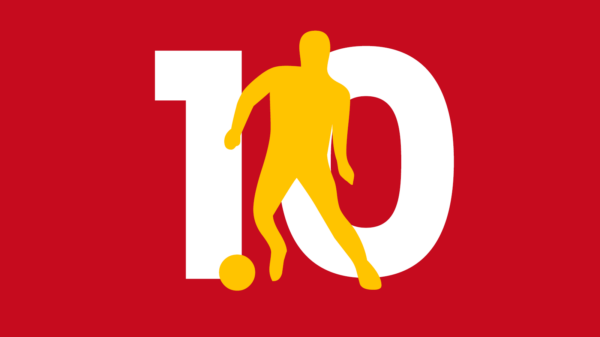The last clash between the teams ended in a 2-1 win for Valencia. This time in the Santiago Bernabeu, things didn’t quite turn out the way Ancelotti would have want them too either, as Real were down by 0-2 after just 30 minutes of the game. Thanks to a much better performance in the 2nd half, Real managed a draw courtesy a stunner from Isco, which was also the last goal to be scored ending the game at 2-2.
REAL MADRID 2-2 VALENCIA
Line-ups
Real Madrid: 1 Casillas, 17 Arbeloa (Carvajal), 3 Pepe, 4 Ramos, 5 Coentrao (Marcelo), 10 James, 8 Kroos ( Illaramendi), 23 Isco, 11 Bale, 14 Chicharito, 7 Ronaldo.
Valencia: 1 Alves, 19 Barragan, 5 Mustafi, 23 Otamendi, 31 Gaya, 21 Gomes(De Paul), 18 Javi Fuego, 10 Parejo, 11 Piatti (Orban), 9 Alcacer (Negredo), 8 Feghouli
Goals: Alcacer, Javi Fuego // Pepe, Isco
Counter-Attacks
Nuno Espirito has really done a fascinating job in his first season as the Valencia manager. They have competed with the top three, playing beautiful football with many variations of systems and tactics in both defense and offense. Don’t be surprised if you see Valencia compete for the La Liga next year as they have achieved positive results throughout this season against the top-teams, and they have just begun.
Valencia started the game with a high intensity direct style of play in the counter-attacks while in defense they stayed compact in their own half, waiting for the Real Madrid mistakes (which there were actually a lot of in the first half).
A formation of 4-3-3 in the attacking phase with Piatti and Feghouli as wingers, turned into a low/deep & compact 4-5-1 formation when in defense as the wingers of Valencia tracked all the way back in defense.

Here we see a compact 5-man midfield with a flat 4 line and Andre Gomes as the #10 all a part of the Valencia defense. Notice how they have closed down much of the half-spaces but also the width of the pitch with Feghouli and Piatti defending deep. This led to many mistakes by Real Madrid and early inefficient crosses, as Valencia played compact in central and wide areas covering up and defending the potential dangerous spaces for Real to attack.
Playing a system like this makes the team rely heavily on the wingers of the team (wingers + full-backs), because of the direct play and fast transactions from defense to attack searching for spaces in wide area to exploit the other team and threaten through the counter-attacks, but also to help the team keep its compactness when in defense (horizontally and vertically, as seen in the picture). You need players with the ability to run with/without the ball at high speed & great stamina.
This counter-attack came from a poor cross from Bale, which Andre Gomes snapped up to exploit the now vulnerable Real Madrid (who have as many as 7 players in attacking positions, 4 of them inside the penalty-box) leaving space and gaps for Valencia to exploit.
Showing no mercy, Gomes continues his run, creating a situation of 3 vs 3. This shows you just one style of many plays that Valencia has and are able to execute depending on the situation and opposition. The trio of Valencia (in this situation) has run over 40m, trying to exploit the Real defense, and take advantage of this opportunity to counter.
Valencia is a very flexible team. By flexible I mean, they have and can employ different styles in the build-up. They have for example a way of the very modern build-up system with: 3-back line, with Javi Fuego, the central midfielder, dropping deep in between the 2 center-backs, to act as the ‘’link-up’’ player, to play through-balls to the players occupying half-spaces and so on. In this game such situations did occur where Valencia were allowed to create and employ the build-up models.
As mentioned before it is important to use the wide players in counter-attacking football. When a team defends deep (especially with the wingers dropping deep as well), they are basically inviting the opposition to attack with the full-backs to provide help for the winger of the attacking-team, if that does not occur, then the defending team will have a 2 vs 1 advantage (outnumbering the attacking winger), meaning that chances for the defending team to win the ball back, is 50% higher because you are always 1 player more than the opposition team.
Here we see a situation in which Otamendi who has just won the ball back in midfield is starting to penetrate the space that he has in front of him, advancing with the ball to threaten James. What has happened here though, is that the Real Madrid defense is extremely vulnerable for the counter. Notice that the Real defense is quite compact centrally but has no width covered at all. Gaya starts his run to exploit the space that Real has opened up for Valencia. Another fantastic detail here, is Piatti’s movement. He has opened up the space for Gaya to penetrate, by occupying Arbeloa. By doing so, he questions Arbeloa:
– Should he focus on Gaya’s movement who is exploiting the flank ?
– Or should he mark Piatti?
Otamendi plays a direct ball to Gaya, who is now basically in a winger’s position. What you can see is Arbeloa has noticed that James has started his run to help. What Arbeloa does though is slightly losing sight of Piatti, who’s now penetrating the half-space between Arbeloa & Pepe. This move makes Pepe lose his focus on Alcacer (who you see behind Pepe) and drift towards Piatti.
What Alcacer & Piatti have done here is that the latter moves away from Pepe to leave space for Alcacer to continue his run towards Pepe who now has no clue who to mark as his first priority was Piatti. Gaya plays the perfect ‘’banana-cross’’ precisely to Alcacer who finds the net for Valencia. A perfectly coordinated combination attacking move practically performed against one of the best teams in the world.
Now Real has both James, who is focusing on stopping the cross from Gaya, and Arbeloa focused on Gaya, while the real threat was the 2 vs 2 situation that was created inside the penalty box. Arbeloa has occupied space that is nowhere near to be occupied or threatened by any player though it is not a bad defensive-position, but just a very intelligent attacking piece of play by Valencia.
Another point of note is that only 2 passes were played by the Valencia team before the goal, Otamendi winning the ball back in midfield passing it over to Gaya, who crossed it over to Alcacer. That’s what you call efficiency.
The good and bad positional play
Real Madrid had big problems in the first half, as seen in the Juventus game: too many players were occupying the wrong space at the right time. Real Madrid started their build-ups with great speed and were often seeking to play the ball from one zone to the other, keeping the ball in possession, with Valencia dropping deep staying compact. Though the strive for possession was prioritized, it was more than often not well executed.

Isco has the ball in an area of the pitch where I think he is at his best. In this kind of positions, you need players with great dribbling ability in tight spaces, exactly what Isco has. Notice the positions of the remaining Real Madrid players, as no one is really trying to provide help for Isco, by forming the angles to play through the defensive walls of Valencia, but instead we saw in the 1st half, many Real players in ‘’passing-shadows’’ which was bad positional play. What happens here is that Isco tries to find Chicharito inside the box with a cross which Valencia clears away easily. A great way of throwing away the possession of the ball as Real only has 1 player inside the box.
The same situations were too often seen against Juventus in Italy, as Real did on many occasions play desperate crosses with no real intent. What Real should do is to try to beat the fullback and at least try to cross it from a more dangerous area. To beat the full-backs/wingers you have to have passing options with good angles as in the situation above, you can see that Isco has no player to pass either vertically or horizontally (maybe Arbeloa should position himself near the touchline and drag a defender with him = open up more space and options for the player in possession = Isco) who has to try to beat his man or as he did here, play the early cross.
The above is a same type of situation but with different players. Bale penetrates with the ball in the flank with some space, notice the position of Arbeloa and how not even one Real Madrid player is in a good position to receive the ball from Bale.
What Bale does now is to cut inside under pressure from Piatti. What you can notice is that Bale really has no other option than to cross it early (as Isco did earlier) or to cut inside (hold the ball). Arbeloa is trying to occupy Gaya, but in this situation he should be the one to provide help for Bale and drag Gaya away from his position or at least help Bale to create a 2 vs 2 situation because by cutting-inside Bale is at a numerical disadvantage. You can also see that no player is out wide and no player in the space in front of the defensive lines of Valencia. This makes it very hard for Real Madrid to create anything dangerous. Real Madrid does eventually cross the ball again but the ball goes past every player, with the ball ending up as a throw in for Valencia. Additionally the position of Arbeloa in the attack makes Real Madrid very vulnerable to the counters on the flanks, as they are almost inviting Valencia to counter. Take Barcelona for example: they have either Alves (full-back) or Rakitic (central-midfielder) providing the passing options on the flank, so that the player in possession of the ball always has a player to pass to, which creates a better balance and dynamic within the team.
Another example of how Bale is being outnumbered by the wide players of Valencia, in the wide attacking zone of the pitch. Notice the 5 man defensive line here from Valencia and how Fuego covers for Otamendi who in turn is helping Gaya & Piatti to outnumber Real Madrid. Also notice the bad positional play from Real Madrid as Bale once again has no other option than to cross it early or try to beat his man.
We often saw Isco or James way too narrow or too wide, and didn’t really provide any help for either Kroos or Illarramendi or the 3-attackers upfront. What was missing was the playmaker; a player that could provide passes for the attackers, attackers who were often seen coming deep to seek the ball or were the targets of the long-ball trying to create something out of nothing. In many situations, time was given for the centre-backs to attack the space and they often penetrated the same space of the respective midfielder of Real Madrid, ruining the balance of the team, as this led to Isco dropping way too deep at times to get the ball or Illaramendi to cover for Ramos/Pepe.
In the 2nd half though, things changed drastically and Real Madrid were back to the usual dominance.
The midfield trio acted more as the actual midfielders of this team and the substitutes: Marcelo and Carvajal providing much needed options and dynamism in the build-up and attacking third phase of the pitch.
James is on the ball and Isco’s position is one that is more connected to the 3 attackers. Marcelo and Carvajal are penetrating the flanks and Illaramendi is behind James. All the midfielders are now positioned more centrally which gives the full-backs more space out-wide.
In the 2nd half though we see now that Real Madrid has 4 players occupying the space between the lines of Valencia (half-spaces). With 4 players in good position to receive the ball, all with good angles to get the ball but also in relation to the player with the ball. Notice also the difference between the Real Madrid fullbacks: Carvajal’s position as opposed to that of Arbeloa in the 1st half, who is now totally focused on penetrating the flank providing the balance of the attack as this ‘’stretches-out’’ the compact Valencia defense.
Carvajal gets the ball out wide courtesy a one touch pass from Cristiano. Now both Bale & Ronaldo have enough space to penetrate and threaten the dangerous half-space, but also the movement from Ronaldo dragging Otamendi with him away from his position. This opens up for Chicharito to receive the through-ball from Carvajal.
Watch the position of Isco as he is now much more centrally positioned but also more attacking-minded penetrating dangerous space between the lines, as it was exactly in that zone/area of the pitch that Isco did score the equalizing goal.
Conclusions
It seems to me that Ancelotti wants his centre-back to, if the situation is needed, be able to penetrate and move the ball if say the holding midfielder is not available or out of position. Maybe Ancelotti is trying to imprint some new tactical elements to this Real Madrid as we often saw Ramos and Pepe penetrating and playing the through-ball to the more creative/attacking players.
What Real Madrid did in the 2nd half was always have the good triangles between the different parts of the team and also maximize the full width and length of the pitch with Carvajal and Marcelo being very decisive of the outcome of the game. The Real Madrid players were much better positioned in relation to the player in possession which made the attacks more fluid. The fullbacks (Marcelo & Carvajal) were brilliant and proof why they are arguably one of the best pair of fullbacks in the world, joining and creating the attacks of Real Madrid. Real Madrid’s attacking/creative midfielders did well in the 2nd half as they searched for and occupied the more dangerous spaces centrally to create balance to all parts of the team especially in the build-up play/attack to threaten the teams, from defense to midfield to attack, all connected to each other.
Written by Albin Sheqiri
- Antonio Conte: Exploring Italy’s tactics at Euro 2016 - July 22, 2016
- Analysis: The genius of Lionel Messi | Offensive Pressing Traps, La Pausa and more - January 21, 2016
- Tactical Analysis: Roma 1-1 Barcelona | Busquets man marked and battle of the center - September 22, 2015






































































